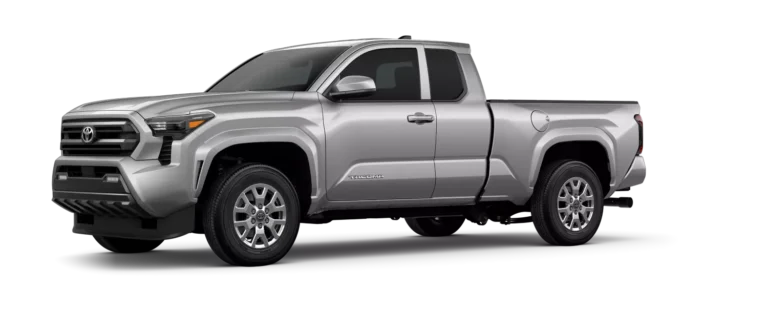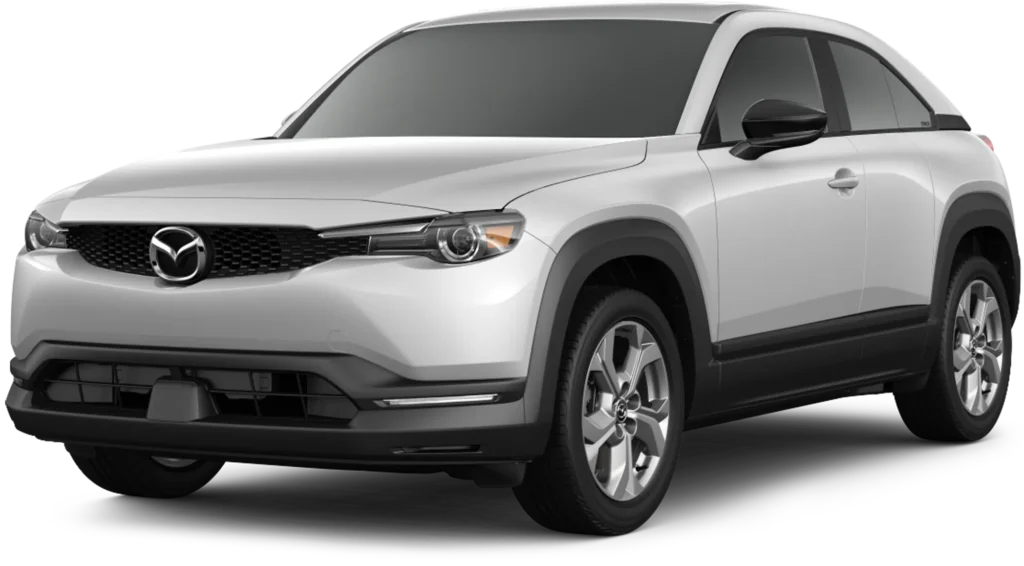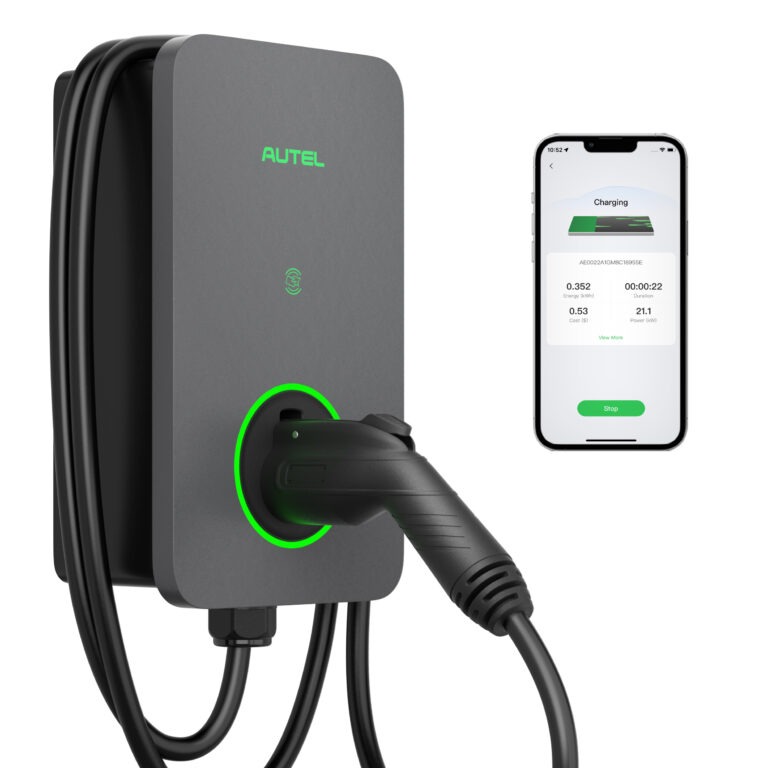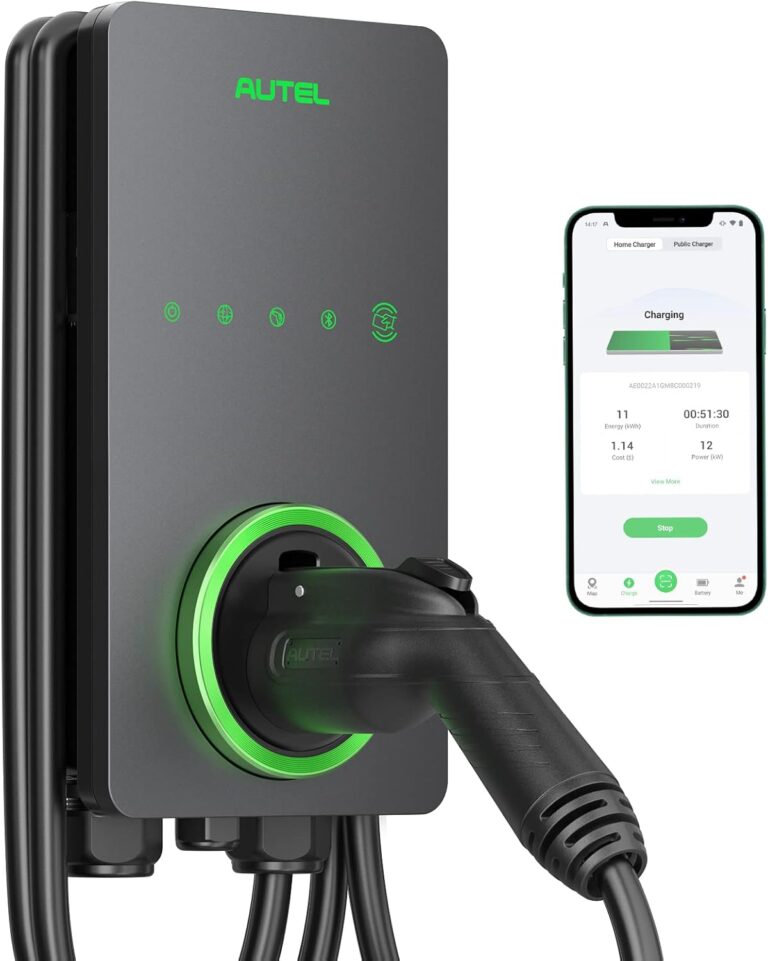
Mazda VIN Decoder
Don’t risk hidden issues! Click ‘Check Any VIN Now’ to see recalls, problems, issues, and more! Just enter your VIN and email to get your report.
Free Mazda VIN Decoder
Don’t risk hidden issues! Click ‘Check Any VIN Now’ to see recalls, problems, issues, and more! Just enter your VIN and email to get your report.
Your Ultimate Guide To A Mazda VIN Decoder!
What Is A Mazda VIN Decoder
A Mazda VIN decoder unlocks the hidden information within a Mazda’s 17 character VIN, revealing key details about that specific vehicle. This includes the original factory specifications (engine, transmission, trim level, options, paint color, etc.), manufacturing location, and sometimes even the production date.
For Mazdas specifically, a good VIN decoder can be particularly valuable because it can differentiate between the various models (Mazda3, CX-5, MX-5 Miata, etc.), trim levels (Sport, Touring, Grand Touring, etc.), engine options (Skyactiv-G 2.0, Skyactiv-G 2.5T, etc.), and special editions that are characteristic of the Mazda brand. It’s more than just a generic car decoder; it’s designed to navigate the nuances of Mazda’s model lineup, often revealing subtle differences between trims or packages that might not be immediately obvious.
A Mazda VIN decoder will also show you things like whether there are any outstanding recalls, issues, complaints or problems.
The sleek design and spirited performance of a Mazda are undeniably appealing, but before you commit, you need to know the whole story. A Mazda’s Vehicle Identification Number (VIN) is the key to unlocking that story, revealing everything from its original factory specifications to its past adventures (and potential problems). This guide is your ultimate resource for decoding Mazda VINs. We’ll make sure you can make informed decisions whether you’re eyeing a brand new Mazda3 or a classic Miata.
We’ll take you deep into the world of Mazda VIN decoding, covering everything you need to know:
- What is a Mazda VIN Decoder? We’ll explain how this 17 character code acts as a unique identifier for every Mazda.
- Decoding Your Mazda VIN: We’ll break down each character and its meaning, revealing the secrets hidden within the code, including information specific to Mazdas like model designation (e.g., Mazda3, CX-5, MX-5 Miata), trim level (Sport, Touring, Grand Touring, etc.), and factory options.
- Free vs. Paid Mazda VIN Decoders: We’ll explore both free and paid options to help you choose the best tool for your needs, considering the level of detail each provides. Some paid decoders may offer access to Mazda-specific databases or historical records.
- Mazda VIN Structure: Understand the organization of the 17 characters and what each section signifies, including the World Manufacturer Identifier (WMI) specific to Mazda and what it tells you about where your Mazda was manufactured (e.g., Japan, Mexico, etc.).
- Where to Find Your Mazda VIN: We’ll show you the common locations for finding the VIN on different Mazda models, from the windshield to the driver’s side doorjamb. We’ll also discuss where to find it on older models, which can sometimes be tricky.
- Decoding Specific Mazda Codes: We’ll delve into the specific codes used by Mazda, explaining what they reveal about the vehicle’s origin, engine type (e.g., Skyactiv-G 2.0, Skyactiv-G 2.5T), transmission, and more. This could include details about special editions like the 30th Anniversary Miata or specific trims.
- Mazda Specific Information: Beyond the basic VIN, we’ll discuss resources for researching Mazda build sheets (if available), which can provide even more granular detail about the original configuration of your Mazda, including options, colors, and even the original dealer. This is particularly helpful for classic Mazdas and restoration projects.
- Checking for Mazda Recalls: We’ll cover how to use your VIN to check for any outstanding recalls on your Mazda, ensuring its safety and reliability. This is crucial, especially for older models.
- Mazda Forums and Communities: We’ll mention online Mazda communities and forums where you can connect with other owners and experts, often willing to help decode VINs and provide insights into specific models. These communities are invaluable resources.
Table of Contents
Decoding Mazda Model Codes
Modern Mazda VIN Codes
- KE: Mazda CX-5 (2012-2017)
- KF: Mazda CX-5 (2017-present)
- KG: Mazda CX-8 (2018-present)
- KH: Mazda CX-60 (2022-present)
- KJ: Mazda CX-70 (2024-present)
- KL: Mazda CX-80 (2024-present)
- KK: Mazda CX-90 (2023-present)
- DJ: Mazda2 (2014-present)
- DK: Mazda CX-3 (2014-present)
- DM: Mazda CX-30 (2019-present)
- ND: Mazda MX-5 Miata (2016-present)

Older/Discontinued Mazda VIN Codes
- SA: Mazda RX-7 (first generation)
- FC: Mazda RX-7 (second generation)
- FD: Mazda RX-7 (third generation)
- NA: Mazda MX-5 Miata (first generation)
- NB: Mazda MX-5 Miata (second generation)
- NC: Mazda MX-5 Miata (third generation)
- BJ: Mazda Protegé/323 (various generations)
- GG/GY: Mazda6 (first generation)
- GH: Mazda6 (second generation)
- GJ/GL: Mazda6 (third generation)
- CW: Mazda5 (second generation)
- DE: Mazda2 (second generation)
- DY: Mazda2/Demio (first generation)

Other Mazda VIN Codes
- CP: Premacy/Ixion
- CR: Mazda5/Premacy
- CC: Mazda Biante
- DW: Mazda Demio/121/Festiva Mini Wagon
- DC: Mazda Verisa
- DR: Mazda MX-30

Older And Less Common Mazda VIN Codes
- FA: Mazda Familia (older generations)
- GA: Mazda Capella (older generations)
- HB: Mazda Luce (older generations)
- LA: Mazda Luce (older generations)
- MA: Mazda Cosmo (older generations)
- TC: Mazda Titan (older generations)
- VA: Mazda E-Series (older vans)
- UA: Mazda Proceed (older trucks)
- GZ: Mazda6/Atenza (wagon version of GH)
- HV: Mazda Luce Legato/929L (wagon version)

Mazda VIN Locations

Mazda VIN Decoder - All Codes
Country of Origin
| Code | Country |
|---|---|
| J | Japan |
| M | Mexico |
| V | Vietnam |
| C | China |
Manufacturer
| Code | Manufacturer |
|---|---|
| M | Mazda Motor Corporation |
Model Line and Years
| Model | Years |
|---|---|
| Mazda2 | 2002–present |
| Mazda3 | 2003–present |
| Mazda6 | 2002–2021 |
| MX-5 Miata | 1989–present |
| RX-7 | 1978–2002 |
| RX-8 | 2003–2012 |
| CX-3 | 2015–2022 |
| CX-30 | 2019–present |
| CX-5 | 2012–present |
| CX-50 | 2022–present |
| CX-60 | 2022–present |
| CX-90 | 2023–present |
Manufacturing Plant
| Code | Plant |
|---|---|
| H | Hofu Plant, Japan |
| U | Ujina Plant, Japan |
| M | Salamanca Plant, Mexico |
| C | Chang'an Mazda, China |
| V | Vina Mazda, Vietnam |
Where To Find The VIN On A Mazda3
(2003–Present)
- Dashboard: Clearly visible through the lower-left corner of the windshield.
- Driver’s Side Door Frame: Inside the B-pillar, printed on a factory label.
- Engine Bay: Stamped on the firewall or front strut tower.
- Paperwork: Listed in registration, insurance, and warranty documents.
Where To Find The VIN On A Mazda6
(2002–2021)
- Dashboard: Found at the base of the windshield, driver’s side.
- Driver’s Side Door Frame: Inside the door jamb, on a compliance sticker.
- Engine Bay: Stamped on the firewall or chassis subframe.
- Paperwork: Recorded in title documents, insurance, and service history.
Where To Find The VIN On A Mazda CX-3
(2016–2021)
- Dashboard: Visible through the driver’s side windshield, near the lower-left corner.
- Driver’s Side Door Frame: Located on the B-pillar, next to the latch.
- Engine Bay: Stamped on the firewall or front crossmember.
- Paperwork: Found in registration, insurance, and service records.
Where To Find The VIN On A Mazda CX-30
(2020–Present)
- Dashboard: Easily seen through the windshield’s lower-left side.
- Driver’s Side Door Frame: Inside the B-pillar, printed on the manufacturer’s sticker.
- Engine Bay: Stamped on the firewall or chassis support beam.
- Paperwork: Listed in title, warranty, and registration papers.
Where To Find The VIN On A Mazda CX-5
(2013–Present)
- Dashboard: Clearly displayed at the lower-left windshield corner.
- Driver’s Side Door Frame: Found inside the door jamb, near the latch.
- Engine Bay: Stamped on the firewall or front suspension mount.
- Paperwork: Located in title records, registration, and service documents.
Where To Find The VIN On A Mazda CX-50
(2023–Present)
- Dashboard: Visible through the windshield on the driver’s side.
- Driver’s Side Door Frame: Inside the door jamb, printed on a factory label.
- Engine Bay: Stamped on the firewall or chassis near the radiator support.
- Paperwork: Found in ownership documents, warranty records, and insurance.
Where To Find The VIN On A Mazda CX-9
(2007–Present)
- Dashboard: Found at the base of the windshield, driver’s side.
- Driver’s Side Door Frame: Inside the B-pillar, printed on a compliance sticker.
- Engine Bay: Stamped on the firewall or subframe near the radiator.
- Paperwork: Documented in registration, insurance, and title records.
Where To Find The VIN On A Mazda MX-5 Miata
(1989–Present)
- Dashboard: Clearly visible through the lower-left windshield corner.
- Driver’s Side Door Frame: Located inside the B-pillar, near the latch.
- Engine Bay: Stamped on the firewall or front strut tower.
- Chassis Frame: Older models may have it engraved on the rear subframe.
- Paperwork: Found in title documents, service history, and registration records.
Where To Find The VIN On A Mazda RX-8
(2003–2012)
- Dashboard: Located at the lower-left windshield corner, visible from outside.
- Driver’s Side Door Frame: Inside the B-pillar, printed on a factory label.
- Engine Bay: Stamped on the firewall or chassis near the radiator.
- Paperwork: Listed in registration, warranty, and insurance records.
How To Decode a Mazda VIN
The Mazda VIN and each character or group of characters provides specific information about the vehicle. Here’s a general breakdown:
- 1st Character: Country of manufacture (e.g., J for Japan, F for USA, 3 for Mexico).
- 2nd Character: Manufacturer (usually M for Mazda).
- 3rd Character: Vehicle type (often related to the model).
- 4th & 5th Characters: Model code (identifies the specific model and sometimes the body style).
- 6th Character: Restraint system (airbags, seatbelts, etc.).
- 7th Character: Body style (sedan, hatchback, SUV, etc.).
- 8th Character: Engine type (engine code or displacement).
- 9th Character: Check digit (a calculated value used to verify the VIN’s accuracy).
- 10th Character: Model year (a code that corresponds to a specific year).
- 11th Character: Assembly plant (where the vehicle was manufactured).
- 12th-17th Characters: Serial number (a unique identifier for that specific vehicle).
3. Use a Mazda VIN Decoder:
- Online VIN decoders: Many websites offer free Mazda VIN decoding services. Just enter the 17-digit VIN, and the decoder will provide a breakdown of the information.
- Mazda resources: Some Mazda websites or dealerships may offer VIN decoding tools or information.
4. Manual Decoding (Less Common):
- You can try to decode the VIN manually using resources like Mazda workshop manuals or parts catalogs, which might contain information about the codes. However, this can be more challenging and time-consuming.
Example:
Let’s say a Mazda VIN starts with “JM1KE…”
- “J” indicates it was manufactured in Japan.
- “M” indicates it’s a Mazda.
- “1” might indicate a passenger car.
- “KE” is likely the model code for a CX-5.
How To Interperet Different VIN Characters
World Manufacturer Identifier (WMI) – First 3 Characters
- 1st Character: Identifies the country where the vehicle was manufactured.
- J: Japan
- F: United States
- 3: Mexico
- W: Germany
- And many more! There’s a code for nearly every country.
- 2nd Character: Indicates the manufacturer.
- M: Mazda
- T: Toyota
- H: Honda
- And so on.
- 3rd Character: Often represents the vehicle type or division within the manufacturer. This can be more specific, but it’s not always easy to interpret without additional resources from Mazda.
2. Vehicle Descriptor Section (VDS) – Characters 4 through 8
- 4th & 5th Characters: Model Code. As we’ve discussed, these are crucial for Mazda and often tell you the specific model and sometimes even the body style.
- KE: Mazda CX-5 (2012-2017)
- ND: Mazda MX-5 Miata (2016-present)
- And many more!
- 6th Character: Restraint System. This usually relates to the type of airbags and seatbelts in the vehicle. The exact codes can vary, so you might need a decoder or Mazda documentation.
- 7th Character: Body Style. This indicates the general shape and configuration of the vehicle.
- 1: 2-door coupe
- 2: 4-door sedan
- 3: 5-door hatchback
- 5: Wagon
- 7: SUV
- And so on.
- 8th Character: Engine Type. This identifies the engine installed in the vehicle. It might be an engine code or a displacement number.
- G: Skyactiv-G 2.0
- T: Skyactiv-G 2.5T
- Or specific codes that Mazda uses.
3. Vehicle Identification Section (VIS) – Characters 9 through 17
- 9th Character: Check Digit. This is a single digit (0-9 or X) that’s calculated using a specific formula. It’s used to verify the VIN’s accuracy and detect errors or tampering.
- A: Could be 1980, 2010, or another year in that cycle.
- B: Could be 1981, 2011, and so on.
- You’ll likely need a VIN decoder to get the exact year.10th Character: Model Year. This is a code that corresponds to the model year of the vehicle. It’s not always straightforward, as there’s a repeating cycle of letters and numbers.
- 11th Character: Assembly Plant. This indicates where the vehicle was manufactured. Each Mazda factory has its own code.
- 12th – 17th Characters: Serial Number. This is a unique number assigned to each individual vehicle. It’s what makes each VIN truly distinct.
Free Mazda VIN Decoder
Free Mazda VIN decoders are a bit like dipping your toes into the ocean of vehicle data – you get a taste, but not the full experience. These tools typically rely on publicly accessible databases, which, while useful, often have limitations. They might tell you the basics – year, make, and model – but the finer details, like the specific trim level, factory options, and vehicle history, are often missing. Think of it as knowing the name of a movie, but not the director, cast, or plot.
That said, some commonly mentioned and generally reputable options (though they all have their limitations) include:
Mazda’s Official Website (if available): Ideally, the best source would be Mazda itself. Occasionally, manufacturers offer VIN lookup tools on their websites, though this isn’t always the case. It’s worth a quick search for “Mazda VIN lookup” or checking the “My Mazda” section of their site. If they offer it, it’s likely to be the most accurate, though it still might not be as detailed as a paid report.
NHTSA (National Highway Traffic Safety Administration): The NHTSA is your go-to source for safety-related information. Their VIN lookup tool is primarily designed for checking recalls. While it won’t give you the car’s original equipment list, it’s essential for ensuring the vehicle is safe to drive. Think of it as the health check for your potential purchase.
AutoCheck & Carfax: These are the big names in vehicle history reports, but their free VIN checks are more like teasers. They’ll give you a small sample of information, enough to pique your interest, but the real meat (detailed history, accident reports, etc.) is behind a paywall. They’re essentially using the free check as a lead-in to their paid services. Think of it as the free sample at the grocery store – it gets you in the door, but you have to pay for the full-sized product.
Limitations Of A Free Mazda VIN Decoder
Limited Data Access: Free decoders typically pull data from publicly available databases, which may not be complete or up-to-date. They often lack access to proprietary databases that contain detailed information about vehicle history, trim levels, options, and original equipment. Think of it like trying to research a topic using only Wikipedia – it’s a good starting point, but not the full story.
Lack of Detail: While they might tell you the year, make, and model, free decoders often fall short on specifics. They may not reveal the exact trim level (e.g., Sport vs. Grand Touring), the original paint color, or the specific packages and options the vehicle came with from the factory. These details are crucial when evaluating a used car.
Inconsistent Accuracy: The accuracy of free decoders can vary depending on the source and how frequently the databases are updated. Information can be outdated or even incorrect, which can be misleading. It’s always wise to double-check information with other sources.
No Vehicle History Reports: Free decoders generally do not provide comprehensive vehicle history reports. These reports, which often cost money, reveal important information about accidents, title issues, odometer rollbacks, and other red flags.
This is a significant limitation, as a clean title and accident-free history are crucial factors when buying a used car.
Information You Can Get from Free Mazda VIN Decoders
- Year, Make, and Model: This is the most common and reliable information you’ll get. The decoder should accurately identify the year, make (Mazda), and model (e.g., Mazda3, CX-5, MX-5 Miata).
- Trim Level (Sometimes): Some decoders might provide the trim level (e.g., Sport, Touring, Grand Touring), but this is less consistent. Don’t rely on it being accurate, and always double-check.
- Body Style: The general body style (sedan, hatchback, SUV, convertible) is usually included.
- Engine: You might get basic engine information, such as the engine code or displacement (e.g., 2.0L Skyactiv-G). However, the specific engine variations or horsepower figures may not be available.
- Transmission: The type of transmission (automatic, manual) is sometimes provided.
- Manufacturing Location: The country where the vehicle was assembled is often included in the VIN and thus in the decoder results.
Potentially Available Information (Less Consistent):
- Factory-Installed Options: Information about original options (sunroof, leather seats, navigation) is rarely available in free decoders.
- Original Paint Color: This is sometimes included, but not reliably.
- Model Year Code: The specific code for the model year might be displayed, but you might need to look up what it corresponds to.
Best Mazda VIN Decoders
carVertical:
- Strengths: CarVertical is known for its detailed vehicle history reports, including accident records, mileage rollbacks, ownership history, and even photos. They often pull data from multiple sources, which can give a more comprehensive picture. Their reports can be particularly useful for identifying hidden problems.
- Weaknesses: CarVertical is a paid service. While they might occasionally offer a very limited free check, the full reports require payment.
- Best For: Used car buyers who want a thorough understanding of a vehicle’s history and are willing to pay for it.
AutoCheck:
- Strengths: AutoCheck is another well-established vehicle history report provider. They offer a free VIN check that gives you a limited amount of information, but their paid reports are more comprehensive. They are known for their scoring system, which can help assess a vehicle’s overall condition and history.
- Weaknesses: Like CarVertical, the detailed reports come at a cost. The free check is very basic.
- Best For: Similar to CarVertical, good for used car buyers who want a detailed history report and appreciate the scoring system.
3. Carfax:
- Strengths: Carfax is perhaps the most well-known name in vehicle history reports. They have a massive database and often provide detailed information about a vehicle’s past. They also offer a free VIN check, but it’s very limited.
- Weaknesses: Carfax reports can be expensive, and some argue that their database isn’t always complete. The free check is very basic.
- Best For: Used car buyers who are familiar with Carfax and trust their reports, and are willing to pay for the detailed information.
4. NHTSA (National Highway Traffic Safety Administration):
- Strengths: The NHTSA offers a free VIN lookup tool that’s excellent for checking recalls. This is essential information for any vehicle, new or used.
- Weaknesses: The NHTSA site does not provide vehicle history reports or information about trim levels, options, etc. It’s solely focused on safety recalls.
- Best For: Checking for recalls—a crucial step for any car purchase or ownership.
5. Mazda’s Official Website (If Available):
- Strengths: If Mazda offers a VIN lookup tool on their website, it might provide accurate information about the vehicle’s original factory specifications.
- Weaknesses: Availability is not guaranteed. Even if available, it might not offer a full vehicle history or details about options.
- Best For: Verifying original factory information, if Mazda provides this service.
Benefits Of A Using Paid VIN Decoder
Comprehensive Vehicle History Reports:
- This is the biggest advantage. Paid services like Carfax, AutoCheck, and CarVertical provide detailed reports that include:
- Accident History: See if the vehicle has been in any accidents, and if so, the severity and details of the damage.
- Title Issues: Check for salvage titles, flood damage, rebuilt titles, or other title problems that could affect the car’s value and safety.
- Odometer Readings: Verify the mileage and check for potential odometer rollback.
- Ownership History: See how many previous owners the vehicle has had.
- Service Records: Some reports include maintenance and repair history.
- Recall Information: While some free decoders include this, paid services often have more comprehensive recall data.
2. More Accurate and Detailed Information:
- Paid decoders typically have access to more extensive and reliable databases than free services. This means the information you get is more likely to be accurate and complete.
- They often provide more detail about the vehicle’s original specifications, including trim level, factory options, and even the original paint color.
3. Reduced Risk of Buying a Lemon:
- By providing a thorough history report, paid VIN decoders help you identify potential problems before you buy a used car. This can save you from costly repairs and headaches down the road.
- You can make a more informed decision about whether the car is worth the asking price and if it’s right for you.
4. Negotiation Power:
- If the vehicle history report reveals any issues, you can use that information to negotiate a lower price with the seller.
- Knowing the car’s history gives you more confidence in the negotiation process.
5. Peace of Mind:
- Buying a used car can be stressful, but a paid VIN decoder can give you peace of mind knowing that you have a complete picture of the vehicle’s history.
- You can feel more confident in your purchase decision.
6. Protection Against Fraud:
- Unfortunately, car fraud is a reality. Paid VIN decoders can help you identify potential scams, such as title washing or odometer fraud.
- This can protect you from financial loss and legal issues.
Where Do i Find The VIN Number On My mazda
Dashboard (Driver’s Side): This is the most common and easiest place to find it. Stand outside the vehicle on the driver’s side and look at the corner of the dashboard where it meets the windshield. The VIN is printed on a small metal plate or sticker, visible through the glass.
Driver’s Side Doorjamb: Open the driver’s side door and look at the doorjamb (the metal part of the car’s frame where the door latches). You’ll often find a sticker or plate there with the VIN.
Engine Compartment: Sometimes the VIN is stamped on a metal plate or a sticker located somewhere in the engine compartment. This can be a bit harder to find, and the exact location varies by model. Consult your owner’s manual if you’re having trouble locating it.
Vehicle Documents: Your Mazda’s VIN will also be printed on your vehicle registration, insurance card, and title documents. This is a good backup if you can’t find it on the vehicle itself.
Mazda VIN Number Location On Imports
- Japanese Imports (Often JDM): Japanese Domestic Market (JDM) vehicles can be particularly challenging. The VIN might be in a less obvious location, sometimes on the passenger side (since the driver’s seat is on the right in Japan). It could also be on a plate under the hood or even inside the cabin, perhaps on the firewall or under a floor mat.
- Other Imports: Depending on the country of origin, the VIN location could vary. European cars, for instance, sometimes have the VIN stamped on the chassis or frame.
- Compliance Plates: Imported vehicles often have compliance plates that show they meet local regulations. These plates might contain the VIN, but not always. Look for these plates under the hood, in the doorjambs, or sometimes in the trunk.
How Do I Find the VIN in the Mazda app (MyMazda)
The Mazda app, specifically the MyMazda app, is designed to make it easy to access information about your vehicle, including the VIN. Here’s how you can find it within the app:
1. Open the MyMazda App:
- Make sure you have the MyMazda app installed on your smartphone and that you’re logged in with your Mazda account.
2. Go to “My Vehicle”:
- Once you’re logged in, there should be a section or tab labeled “MyMazda” or “My Vehicle.” Tap on it.
3. Look for Vehicle Information:
- Within the “MyMazda” or “My Vehicle” section, you should find a screen or menu that displays information about your registered Mazda. This is where your VIN should be located. It might be labeled as “VIN,” “Vehicle Identification Number,” or something similar.
4. Add Your Vehicle (If Needed):
- If you haven’t already registered your Mazda in the app, you might need to do that first. There should be an option to “Add Vehicle” or “Register Vehicle.” You’ll likely be prompted to enter your VIN to do this. Once your vehicle is registered, the VIN should be readily accessible.
Discover the value of your cars options and specification!
- Select from thousands of vehicles and options
- See how each option adds value to your car
- Discover which tech features add a premium
- Spot which options hold their value over time
- Find out if that 'Sport' package pays off later
- Identify high value features others miss
$355 $354 $353 $352 $351 $350
How to Check for Mazda Recalls by VIN: A Step by Step Guide
1. Locate Your VIN:
2. Go to the Mazda Recall Website (or NHTSA):
- Mazda’s Website (if available): The best place to start is Mazda’s official website. Search for “Mazda recall lookup” or “Mazda VIN recall check.” Many manufacturers have a dedicated section for this. (Note: Availability of this feature can vary.)
- NHTSA (National Highway Traffic Safety Administration): If Mazda doesn’t have a direct VIN lookup, the NHTSA website is your go-to resource. They have a tool for checking recalls for all makes and models. Go to the NHTSA website (nhtsa.gov) and search for “VIN lookup” or “recalls.”
3. Enter Your VIN:
- On the Mazda recall website (if available) or the NHTSA website, you’ll find a field where you can enter your 17-digit VIN. Carefully type or paste the VIN, ensuring there are no typos or spaces.
4. Check for Recalls:
- After entering the VIN, click the “Submit,” “Check,” or equivalent button. The website will then search its database for any outstanding recalls related to your specific VIN.
5. Review the Results:
- The website will display the results of the search. If there are any open recalls, you’ll see details about the recall, including the affected components and the recommended actions.
- If no recalls are found, it should indicate that as well.
6. Contact Your Mazda Dealer:
- If you find any open recalls, contact your local Mazda dealership as soon as possible to schedule a free repair. They will be able to perform the necessary service to correct the issue.
Useful Resources For Checking A Mazda Recall
Mazda’s Official Recall Website:
- URL: Often, the most accurate information will come directly from the source. Search for “Mazda recall lookup” or “Mazda VIN recall check” on Mazda’s official website. Many manufacturers have a dedicated section for this.
- Benefits: This should provide the most up-to-date information on Mazda-specific recalls. You can usually enter your VIN to see if your vehicle is affected.
2. NHTSA (National Highway Traffic Safety Administration):
- URL: www.nhtsa.gov/recalls
- Benefits: The NHTSA is a U.S. government agency that oversees vehicle safety. Their website has a comprehensive database of recalls for all makes and models, including Mazda. You can enter your VIN to check for any outstanding recalls.
3. MyMazda App:
- Benefits: If you have the MyMazda app installed on your smartphone and have registered your vehicle, it may provide recall information specific to your car. This can be a convenient way to stay updated.
4. Carfax and AutoCheck:
- Benefits: While primarily known for vehicle history reports, Carfax and AutoCheck often include recall information in their reports. If you’re already using their services for a used car purchase, this can be an added bonus. However, keep in mind that their recall data might not be as up-to-date as the official sources.
5. Mazda Dealership:
- Benefits: Your local Mazda dealership is always a reliable source for recall information. They have access to the latest recall data and can check your VIN for any outstanding issues. They can also perform the necessary repairs if your vehicle is affected by a recall.
6. SaferCar App (NHTSA):
- Benefits: The NHTSA offers a free SaferCar app that can send you alerts about recalls for your vehicle. This can be a proactive way to stay informed about any new recalls.
Mazda Forums and Communities
General Mazda Forums:
- Mazda World Forum (www.mazdaworld.org): This is a large and active forum with a wide range of discussions about all Mazda models, from classics to the latest releases. You’ll find threads on maintenance, modifications, troubleshooting, performance, and more.
- Mazda Forum – Mazda Enthusiast Forums (www.mazdaforum.com): Another popular forum with a dedicated section for almost every Mazda model. It’s a great place to find specific information about your car, whether it’s a Mazda3, CX-5, Miata, or any other model.
- Mazda Talk Forums (mazdatalkforum.com): This forum has a more focused approach, with sections dedicated to specific Mazda models and performance discussions. You’ll find threads on modifications, tuning, and racing.
Model-Specific Forums:
- Mazda6club.com: If you own a Mazda6, this is the place to be. It’s a huge community dedicated entirely to the Mazda6, with discussions on everything from reliability to performance upgrades.
- Miata.net: For MX-5 Miata owners, Miata.net is a classic resource. It’s been around for ages and has a wealth of information on everything Miata, from maintenance and modifications to track days and meets.
Reddit Communities:
- r/mazda: This is the main subreddit for Mazda enthusiasts. It’s a great place to see photos, discuss news and rumors, ask questions, and connect with other Mazda owners.
Common Mazda Recalls To Be Aware Of
Recent and Notable Mazda Recalls:
- 2024-2025 CX-90 and 2025 CX-70 (Software Issues): These newer models have been subject to recalls due to software glitches that can affect the dashboard display, defroster, seatbelt warning, 360-degree camera, and even cause a loss of drive power in some cases.
- 2016-2023 MX-5 Miata (Airbag Control Module): A software error in the airbag control module may cause the front airbags to deploy with excessive force during a crash, increasing the risk of injury.
- 2024 CX-90 (Brakes): The automatic braking system might falsely detect objects while driving, causing the brakes to activate suddenly and unexpectedly, increasing the risk of a crash.
- 2024 Mazda CX-90 and Mazda3 (Camera Issues): A software error may prevent rearview, front, and/or side camera images from appearing on the display, reducing the driver’s visibility.
- 2024 CX-90 (Pedestrian Warning Sounds): Software in the Approaching Vehicle Audible System (AVAS) may be missing, leading to inaccurate pedestrian warning sounds, potentially confusing pedestrians.
More Common Recall Types (May affect various models and years):
- Airbags: Issues with airbag deployment, including excessive force, failure to deploy, or unexpected deployment.
- Brakes: Problems with the braking system, such as sudden activation, failure to activate, or issues with the anti-lock braking system (ABS).
- Engine: Engine-related problems, including stalling, fuel pump failures, or issues with the engine control module (ECM).
- Electrical Systems: Issues with electrical components, such as wiring harnesses, sensors, or control modules.
- Fuel Systems: Problems with the fuel system, including fuel leaks or fuel pump failures.
- Steering: Issues with the steering system, such as loss of power steering or steering wheel detachment.
- Tires: Tire-related recalls, such as tire defects or issues with tire pressure monitoring systems (TPMS).
Mazda Warranty Check by VIN: How to Find Your Coverage
Mazda Warranty Information
1. Contact a Mazda Dealership:
- This is the most reliable method. Call your local Mazda dealership or any authorized Mazda service center.
- Provide them with your VIN (Vehicle Identification Number) and your current mileage.
- They can access Mazda’s system and tell you:
- If your warranty is still active
- The type of warranty coverage you have (e.g., bumper-to-bumper, powertrain)
- The remaining duration of your warranty (if applicable)
2. Check Your Warranty Documents:
- When you purchased your Mazda, you should have received warranty documentation.
- Review these documents carefully. They will outline:
- The terms and conditions of your warranty
- The duration of coverage
- What is and isn’t covered
- If you can’t find your warranty documents, contact your Mazda dealer.
3. MyMazda App (Limited Information):
- While the MyMazda app might not explicitly state your warranty status, it can provide information about your vehicle’s purchase date and mileage, which can help you estimate your warranty coverage. However, it’s not a substitute for contacting a dealer.
4. Contact Mazda Customer Service:
- You can contact Mazda’s customer service department by phone or email.
- They may be able to provide you with warranty information based on your VIN.
What Is Included In A Mazda Warranty?
Basic Warranty Coverage: This covers most parts of the vehicle for a specific period (e.g., 3 years/36,000 miles – but this is an example, not a guarantee). You need to find the exact terms for your Mazda.
Powertrain Warranty Coverage: This covers the engine and transmission for a longer period (e.g., 5 years/60,000 miles – but this is an example, not a guarantee). Again, confirm the exact terms for your vehicle.
Additional Warranties: Check if there are any extended warranties, service contracts, or other coverage plans purchased with the vehicle. These would have their own specific terms and conditions.
Warranty Start Date: This is crucial! It’s usually the date the vehicle was first sold or leased (the “in-service date”). This date determines when your warranty coverage begins and expires.
Transferability: Find out if the warranties are transferable to a new owner if you are buying a used Mazda. This is a valuable feature.
What to Do If Your mazda Warranty Has Expired
1. Check for Extended Warranty Options
Mazda Extended Warranty: Mazda offers extended service plans that you may still be eligible for. Check with a Mazda dealership.
Third-Party Warranties: Companies like CarShield, Endurance, or Carchex offer extended warranties. Compare coverage, exclusions, and costs.
2. Consider a Mazda Certified Pre-Owned (CPO) Warranty
If you purchased a used Mazda from a dealership as a Certified Pre-Owned (CPO), it may still have a limited warranty (typically 12 months/12,000 miles or 7 years/100,000 miles on powertrain).
3. Review Mazda’s Recalls & Service Bulletins
Even if your warranty expired, you may still qualify for free repairs under a recall or technical service bulletin (TSB). Check your VIN on Mazda’s website or the NHTSA recall lookup.
4. Self-Insure for Repairs
If you’re concerned about repair costs, consider setting aside money in a savings account for future maintenance and repairs instead of paying for a warranty.
5. Look for Goodwill Repairs
If you have a major issue right after the warranty expires (e.g., engine or transmission failure), Mazda might cover part of the repair as a goodwill gesture if you have a history of dealership service.
6. Find a Reliable Independent Mechanic
If out of warranty, dealership repairs can be expensive. Consider a reputable independent Mazda specialist for lower costs.
7. Join a Mazda Owners Forum
Sites like Mazda3Revolution, Mazda6Club, and Reddit’s r/mazda can help you troubleshoot issues, find affordable repair options, and learn about common problems.
Mazda Budget for Repairs and Maintenance
1. Routine Maintenance:
- Oil Changes: This is the most frequent service. Expect to change your oil every 5,000-7,500 miles (check your owner’s manual for specifics). Costs vary but generally range from $50-$150 depending on the type of oil and if you go to a shop or DIY.
- Tire Rotations: Usually recommended every 5,000-7,000 miles, often done with oil changes. Cost: $25-$50.
- Fluid Checks and Top-offs: This includes coolant, brake fluid, power steering fluid, etc. Should be done periodically. Cost: Varies depending on what needs attention.
- Filter Replacements: Air filters (engine and cabin) need replacing every 15,000-30,000 miles. Costs: $20-$50 per filter.
- Spark Plugs: These typically last 30,000-60,000 miles (check your manual). Replacement can be more involved, costing $100-$300+.
2. Scheduled Maintenance:
- Transmission fluid changes (often recommended around 30,000-60,000 miles)
- Brake inspections (every year or as needed)
- Coolant flushes (every few years)
Follow the Manual: Your Mazda owner’s manual outlines a specific maintenance schedule. It will include items like:

Article By: Dale Ogden
Dale is a highly respected automotive industry expert, renowned for his pioneering work in vehicle forecasting and asset management. As the founder of Check Your Spec and former Forecast Manager at CAP HPI (the UK equivalent of Kelley Blue Book), he spearheaded the development of forecasting strategies and depreciation models for internal combustion, hybrid, and electric commercial vehicles. With over two decades of experience, Dale pioneered EV forecasting models now used by major manufacturers, and has generated residual values for over 10,000 new vehicles.
Mazda VIN Decoder FAQ
I'm buying a used Mazda. How can I use the VIN to check for potential problems?
The VIN is your key to unlocking a wealth of information. First, use a VIN decoder (like those on Carfax, AutoCheck, or CarVertical – though their free versions are limited) to get the vehicle’s basic information (year, make, model, trim). Then, use the VIN to check for open recalls on the NHTSA website (www.nhtsa.gov/recalls). Finally, consider a paid vehicle history report (from Carfax, AutoCheck, etc.) using the VIN. This report can reveal accident history, title issues, odometer rollbacks, and more. A clean VIN and history report don’t guarantee a perfect car, but they significantly reduce the risk of buying a lemon.
I found a Mazda I like, but the VIN comes up with a different engine than the seller described. What should I do?
This is a huge red flag. A discrepancy between the VIN-decoded engine and the seller’s description strongly suggests something is wrong. It could be a simple mistake, but it could also indicate an engine swap (which might not be properly documented) or even a more serious issue like a stolen vehicle. Walk away from this deal unless the seller can provide a very convincing and verifiable explanation. Don’t take any chances.
My Mazda's VIN has a "check digit." What's that for?
The check digit (the 9th character in the VIN) is a clever security feature. It’s calculated using a specific formula based on the other characters in the VIN. Its purpose is to verify the VIN’s authenticity and detect errors or tampering. If the check digit doesn’t match the calculated value, it suggests the VIN might have been altered.
I'm trying to track down the history of a classic Mazda I'm restoring. Can the VIN help?
Yes, but it might be challenging. The VIN can confirm the car’s original year, make, model, and even the assembly plant. However, for older vehicles, detailed records might be scarce. You might have luck contacting Mazda’s historical archives (if they exist) or searching online forums and enthusiast communities. Someone might have information about your specific VIN or model. For very old cars, even the VIN might be hard to verify if the original tags are missing.
The VIN on the car doesn't match the VIN on the title. What should I do?
This is a major problem. A VIN mismatch between the vehicle and the title is a serious legal issue. It could indicate a stolen vehicle, a clerical error, or a fraudulent title. Do not proceed with this purchase until the discrepancy is resolved. Contact your local Department of Motor Vehicles (DMV) or licensing authority to report the issue and get guidance on how to proceed. This is not something you can easily fix yourself.
Where can I find the VIN on my Mazda? I've looked in the usual places and can't find it.
While the dashboard (driver’s side) and doorjamb are the most common locations, sometimes it’s stamped on the engine block, the firewall, or even the frame (especially on older or imported vehicles). Consult your owner’s manual. If it’s an import, it might be on a compliance plate. If you still can’t find it, contact a Mazda dealer or a specialist in older/imported cars. If all else fails, your registration or title must have the VIN. If it’s missing from both the car and the documents, you have a very serious problem.
Unlock accurate valuations for your car’s features in seconds – find out what your options are worth today and in the future.



